I can’t believe it’s been a month since OMD seminar with Janita Leinonen and Jaakko Suoknuuti in Vienna. While my health has held up for the duration of the trip (hurrah!), I did incur some energy debt that I had to pay back before I could resume normal activities. For a while I had to let blogging fall by the side as other things in life took priority.
So, what was new you ask?
Plenty. Since I’m new to OMD way of handling and haven’t even had the chance to try it out with my dogs before seminar (except for playing with Forced Front Cross a few months ago), a lot of it was new to me. Even the things that I already heard about got a new, deeper meaning. So yeah, lots of new stuff!
The seminar was structured as a four-hour lecture and two days of handling in the hot July sun on Monday and a cold not-so-July downpour on Tuesday. There were two courses and four groups of handlers. Each group got half a day with Janita and half with Jaakko, so each dog trained for half a day each day, and they got to train with both presenters which I think was really neat. They have slightly different styles and emphasize different things so it was interesting to listen to both perspectives.
After giving handlers time to look at the 37-obstacle course and formulate their handling strategy they went around the course obstacle by obstacle, showing the best path for the dog and discussing different handling options to get that path. Some options were discussed with a lot of detail which is so typical of OMD handling. Everything was considered: where the dog will be when the maneuver will be started, where will the handler be, where will the handler connect with the dog, how the dog will commit to the obstacle, where will the handler’s feet point, chest laser point, arms, when will the handler take off, in which direction and with what footwork.
While that’s a lot of things to keep in mind while running a course, it is exactly the level of detail that seems to suit my learning style the best. I sometimes find it hard to imitate another handler’s moves, but give me step-by-step instructions and it’s doable. The aim is to internalize these instructions so that one doesn’t have to consciously think about it any more. I think of it like dancing steps.
That is also why they all have names. For example, if instructor says to do a Double Lap Turn at some jump, that conveys a whole set of instructions:
- Use the opposite hand and only think about getting the dog to look at your hand, not about taking the jump
- Do not ask the dog to jump until he has committed to your hand. Look at dog’s eyes to see what he is committing to.
- While he’s focusing on you hand, set the dog up to take the jump from 90 degree angle (if the angle will be smaller, he will turn the wrong way)
- Release the dog to the jump and start moving in the new direction immediately
Point of Commitment
(For agility newbies, point of commitment is the point beyond which the dog will take the obstacle regardless of what the handler is doing. This frees the handler to run to the next obstacle.)
Probably the most useful thing I learned isn’t about any maneuver, it’s about commitment. I wrote several times on this blog about Ruby’s difficulty in committing to obstacles. He used to peel away from the obstacles really easily and was only truly committed to the obstacle when he was in the air – up until that point his path could change 🙂
This trait in combination with speed made him very difficult to handle. He got better with time, but still nowhere as good as dogs who commit easily by nature. I was never sure if it was a handling fault (I moved away too soon) or training fault (I should have trained him to complete the obstacle in this situation, even though I moved).
Here is the OMD way: as they commit the dog to the obstacle, they watch dog’s eyes (well this part is impossible for me right now, but I think with some practice it will get easier) and as soon as he looks at the correct obstacle they consider him committed.
If the dog didn’t look at the correct obstacle at all, then this is a handling problem. On the other hand, if the dog looked at correct obstacle, but then moved away from it when handler moved away then it’s a training issue which they fix by setting reward on intended line for the dog, first so that the dog sees it and then thrown by assistant after the dog has made the correct decision. I can’t wait to try this out with Ruby!
I have already tried it with Java and it worked even a bit too well… In just three reps she was committing to that line and beyond regardless of my position 😉 I think two reps would be enough for her as she is easy to pattern. Once I stopped doing the setup and just handled it she figured it out on the second try. What a smart girl 🙂
Ruby doesn’t pattern so easily and is very motion sensitive so we’ll see how much repetition he will need to start committing that early. Oh this will be so much fun to try 🙂 Not right now though as we are performing ultrasound treatments on his toe to soften the joint capsule which has become rigid after sprain. Rigid joint capsule is our current guess for what is causing him occasional pain, so hopefully when we soften it he should get better.
Connect – Commit – Cue
OMD does the connect-commit-cue sequence for every obstacle.
Connect means that the dog is able to see a side of handler’s face. Handler’s responsibility is to connect with the dog and dog’s responsibility is to perform the obstacles. This is done as the dog is completing previous obstacle (in case of jumps this is on landing). It doesn’t always mean looking the dog directly in the eye as I described above, this can also mean seeing the dog in peripheral vision, but above all dog needs to see at least a side of handler’s face, because that is what tells them to which side of the handler they should continue.
Commit means the dog has looked at the correct obstacle.
Cue means the handler moves to show where the dog is going after that obstacle, so you’re not running the course telling the dog which obstacles to take, but showing them the path they should run.
If you think about it this is very early information to the dog. It’s much earlier than I thought it would ever be possible to give info to my dogs, but that was before I knew how much commitment I should train.
What really made an impression on me was how the way dogs jumped changed when the handler started giving information earlier. Most handlers started out escorting their dogs too much, turning too slow, halting to watch their dog in the middle of a front cross and all of this resulted in not being able to get in position and not executing the next maneuver before the dog took off. As a result dog’s running and jumping looked choppy.
When they started giving the information early enough it was like watching a different dog: beautiful fast, smooth lines, and no choppy strides! Who would have thought that a few simple changes to handling would make such a difference. Simple, but not always easy, as Bob Bailey would say 🙂
Theory Lecture
During the theory lecture Janita touched on many topics, from puppy training to importance of independent obstacle performance, teaching dogs to not drop bars and also how to walk the course, how to plan where we need to be on each point in order to execute correctly and more.
I liked her point on always walking the course the same way as we will run it, meaning we should not only walk the same line but also look at the same spots that we will be looking at as we run. Maybe that’s why the course always looks different when I run it vs when I walk it? Because when I’m walking it I’m not looking at my virtual dog? I think I need to video how I walk the course and compare.
We also learned how they train puppies, that they train most of the things away from agility equipment, how they train commitment etc. Janita said that their puppies train on the same difficult courses as adults do, only on low bars and broken down to short sequences. They start raising the bars at around 9 months and by 12 months the pups are jumping 55cm.
What really surprised me was that they said they only train once per week on equipment, all other training is done at home and on walks. I don’t know of any other high-profile agility competitor who would say they train on equipment so rarely.
It’s been really interesting and fun, and full of things that I want to try with Ruby and Java. I love experiences that make me want to try new stuff 🙂






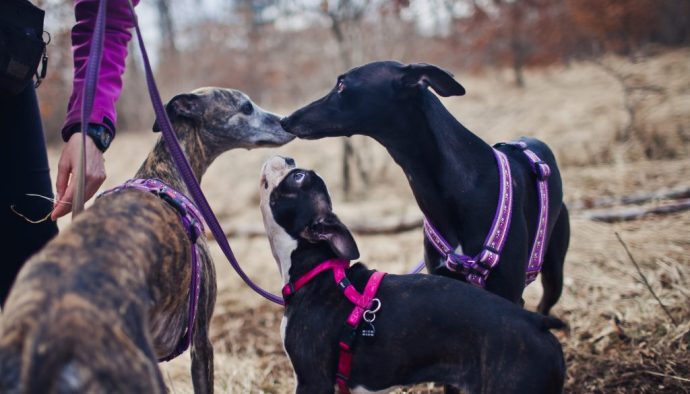



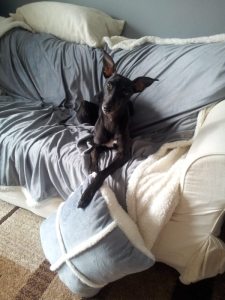







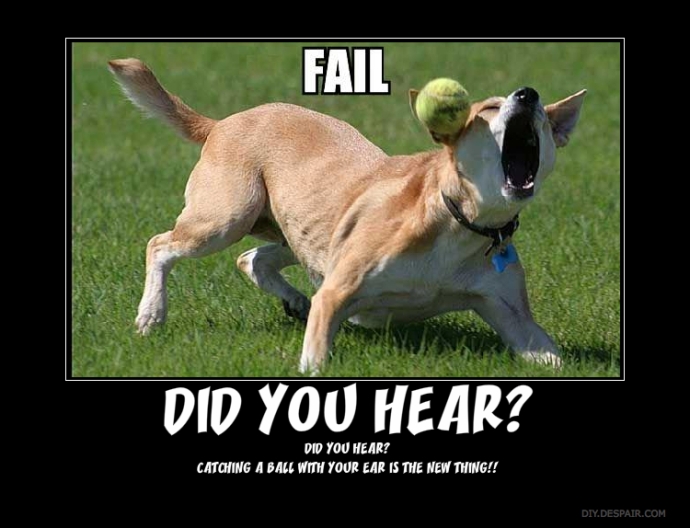
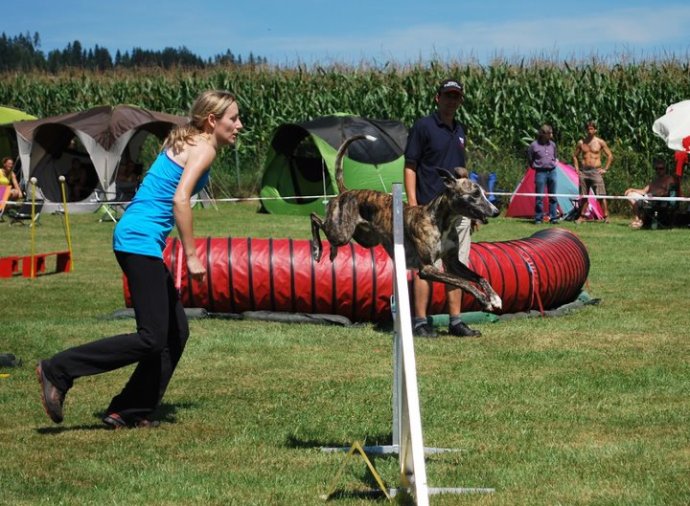

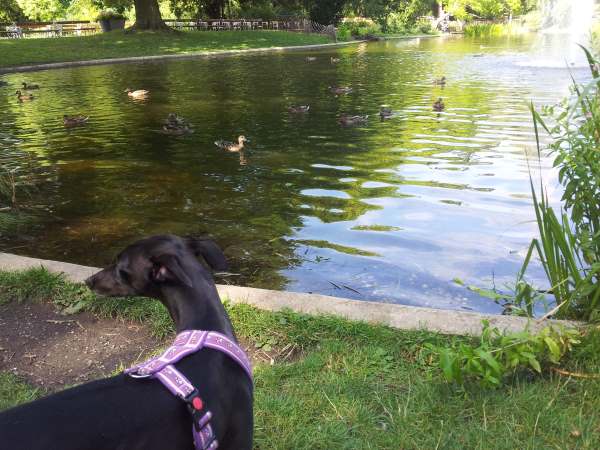
 Here’s the graph showing how quickly each group progressed through stages of learning the task of jumping in a basket. One session = 6 repetitions.
Here’s the graph showing how quickly each group progressed through stages of learning the task of jumping in a basket. One session = 6 repetitions.




